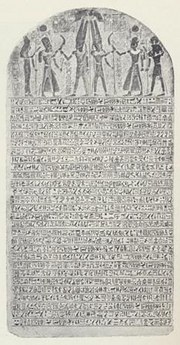Israelite History in its Ancient Near Eastern Context
The interface of religio-historical and literary-critical research on the Hebrew Bible/Old Testament has a long tradition at the Faculty of Theology in Berlin. Already Wilhelm Leberecht de Wette, whom Friedrich Schleiermacher brought to the newly-founded University of Berlin in 1810, worked in both of these areas. With the publication of his Lehrbuch der Hebräisch-jüdischen Archäologie (1814) and his Einleitung in das Alte Testament (1817), de Wette laid the foundations for a research agenda that would characterize the work of all of the successors to his chair.

Ernst W. Hengstenberg (Professor of Old Testament from 1826 to 1869) was the first scholar in the field to give attention to the cultural contacts between ancient Israel and ancient Egypt. With the publication of his work Die Bücher Mose’s und Aegypten, Hengstenberg provided the impetus for a research tradition spanning the work of Georg Ebers, W. Max Müller, Albrecht Alt, Wolfgang Helck, as well as the work of many more recent scholars. In 1924, Hugo Gressmann (holder of the chair from 1907 to 1927) published a groundbreaking essay in which he compared the recently-published Teaching of Amenemope with Prov 22:14–24:22, resulting in new insights into Israelite wisdom literature.
The current research projects of the chair connect to this long tradition, as they are focused on the cultural connections between ancient Israel and ancient Egypt, the history of ancient Near Eastern religion, the analysis of the book of Proverbs in the context of ancient Near Eastern literature, as well as on reception-historical questions.
Please note that the English version of this website is currently under construction.
You can find information on the chair holder here and on the ERC project here.
